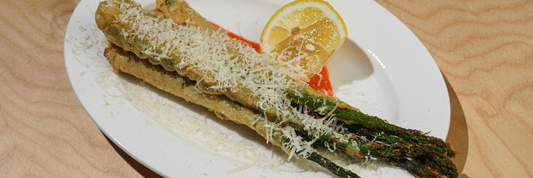Dixie Cups are more than just disposable containers; they are an integral part of modern convenience, widely used across homes, offices, events, and healthcare facilities. In this article, we’ll explore the history, types, sizes, uses, and more about Dixie Cups to provide a comprehensive understanding of their significance.
What is a Dixie Cup?
A Dixie Cup is a disposable cup primarily made of paper or plastic, designed for single use. It is known for its convenience, hygiene, and versatility. From serving drinks at parties to dispensing water in offices and providing sanitary solutions in healthcare facilities, Dixie Cups have become a staple of everyday life.
The History of Dixie Cup

The story of Dixie Cups dates back to the early 20th century when they were introduced as a hygienic alternative to shared drinking glasses. Initially marketed under the name "Health Kup," they were later renamed "Dixie Cup" to reflect their friendly, accessible appeal. Over the years, Dixie Cups have played a pivotal role in promoting disposable products, shaping modern consumer culture.
Key milestones in Dixie Cup history:
- Early 1900s: Introduction as a solution for hygiene concerns.
- 1920s-1950s: Expansion into homes, businesses, and public spaces.
- Modern Era: Innovations in eco-friendly materials and sustainable designs.
Disposable Hot and Cold Paper Cup
What cup sizes should you offer in your coffee shop
The benefits of this organic ice cream
Types of Dixie Cups
Dixie Cups come in a wide variety of types, catering to different needs:
-
By Material:
- Paper Dixie Cups: Lightweight, often coated for liquid resistance.
- Plastic Dixie Cups: Durable and suited for colder beverages.
- Biodegradable Options: Made with eco-friendly materials.
-
By Purpose:
- Hot Beverage Cups: Designed to handle high temperatures.
- Cold Beverage Cups: Suitable for water, soda, or juice.
- Healthcare Cups: Perfect for dispensing medication or mouthwash.
-
By Design:
- Plain, branded, or decorated cups for events or personal use.
Dixie Cup Sizes
Dixie Cups are available in various sizes to suit different needs:
- 3 oz: Commonly used in bathrooms or for sampling.
- 5 oz: Popular for office water dispensers.
- 8 oz and above: Ideal for serving coffee, tea, or larger portions.
Choosing the right size ensures convenience and minimizes waste, making Dixie Cups versatile for any situation.

How Much Does a Dixie Cup Cost?
Dixie Cups are affordable and vary in price depending on the material, size, and quantity. On average:
- A pack of 100 3 oz paper cups costs between $5 and $8.
- Larger cups or specialized designs may cost slightly more.
You can find Dixie Cups at most supermarkets, online retailers, and wholesale suppliers.
Are Dixie Cups Microwave Safe?
Yes, certain paper Dixie Cups are microwave-safe, but not all. To determine if your Dixie Cup is safe for microwave use, check for a microwave-friendly symbol on the packaging. Plastic Dixie Cups are generally not microwave-safe and should not be used for heating liquids.
For hot beverages, always handle with care to avoid spills or burns.
Vintage Dixie Cups: A Collector’s Item
Vintage Dixie Cups, particularly those with unique designs or from early production years, have become collectible items. Features of collectible Dixie Cups include:
- Distinctive artwork and logos from different eras.
- Rare or limited-edition designs.
- Historical significance in advertising and pop culture.
Collectors often preserve these cups as nostalgic memorabilia, reflecting changes in design and consumer habits over decades.

Dixie Cup and Ice Cream
Unexpected Transformation
As people experimented with different uses for the Dixie Cup, it was soon discovered that its size and shape were ideal for holding small servings of ice cream.
Rise in Popularity
The Dixie Cup's association with ice cream grew, and it became a popular choice for serving frozen treats at parties, events, and ice cream parlors.
Dixie Cup Manufacturing and Materials
Paperboard and Wax Coating
The construction of Dixie Cups involves paperboard coated with a layer of wax, making them sturdy enough to hold liquids and prevent leakage.
Convenience and Portability
The lightweight and compact design of Dixie Cups made them an attractive option for ice cream vendors and consumers alike.
Are Dixie cups biodegradable?
Biodegradability and Sustainability
The issue of disposable cups' impact on the environment has gained attention. Dixie Cups' wax-coated paperboard makes them more biodegradable compared to plastic-coated alternatives like Hoodsie Cups.
Eco-Friendly Innovations
Manufacturers and consumers are increasingly seeking environmentally friendly alternatives, such as compostable or recyclable paper cups.
The Birth of the Hoodsie Cups

Hoodsie Cups are a specific brand of ice cream cup that is popular in New England. They were first introduced in 1947 by the H.P. Hood company, which is based in Massachusetts. Hoodsie Cups are unique in that they feature two flavors of ice cream in each cup: one side is chocolate, and the other side is vanilla.
Hoodsie Cups are a nostalgic treat for many people who grew up in the New England area. They are often sold at local convenience stores and can be found in many grocery stores in the region.
What’s the Difference between a “Dixie Cup” and a “Hoodsie Cup?”
So, what sets these two ice cream cups apart? There are a few key differences to consider.
First, the Dixie Cup is a more generic brand of ice cream cup that is sold in many different regions of the country. It is not specifically known for its ice cream cups, as it is also sold for other purposes like water cups.
On the other hand, Hoodsie Cups are a specific brand of ice cream cup that is only sold in New England. They are known for their unique two-flavor design and are often considered a regional specialty.
Another difference is the materials used to make the cups. Dixie Cups are made from paperboard that is coated in wax, while Hoodsie Cups are made from a type of paperboard that is coated in a layer of plastic. This makes Hoodsie Cups more durable and less likely to leak, but also less environmentally friendly.
Finally, there is a difference in the overall experience of eating these two ice cream cups. Dixie Cups are often used as a convenient and portable option for enjoying a frozen treat on-the-go. Hoodsie Cups, on the other hand, are often associated with childhood memories and a sense of nostalgia for people who grew up eating them.
In the end, both the Dixie Cup and the Hoodsie Cup have their own unique qualities that make them popular choices for enjoying a frozen treat. Whether you prefer the convenience of the Dixie Cup or the nostalgia of the Hoodsie Cup, there’s no denying that both cups have a place in the world of frozen desserts.




